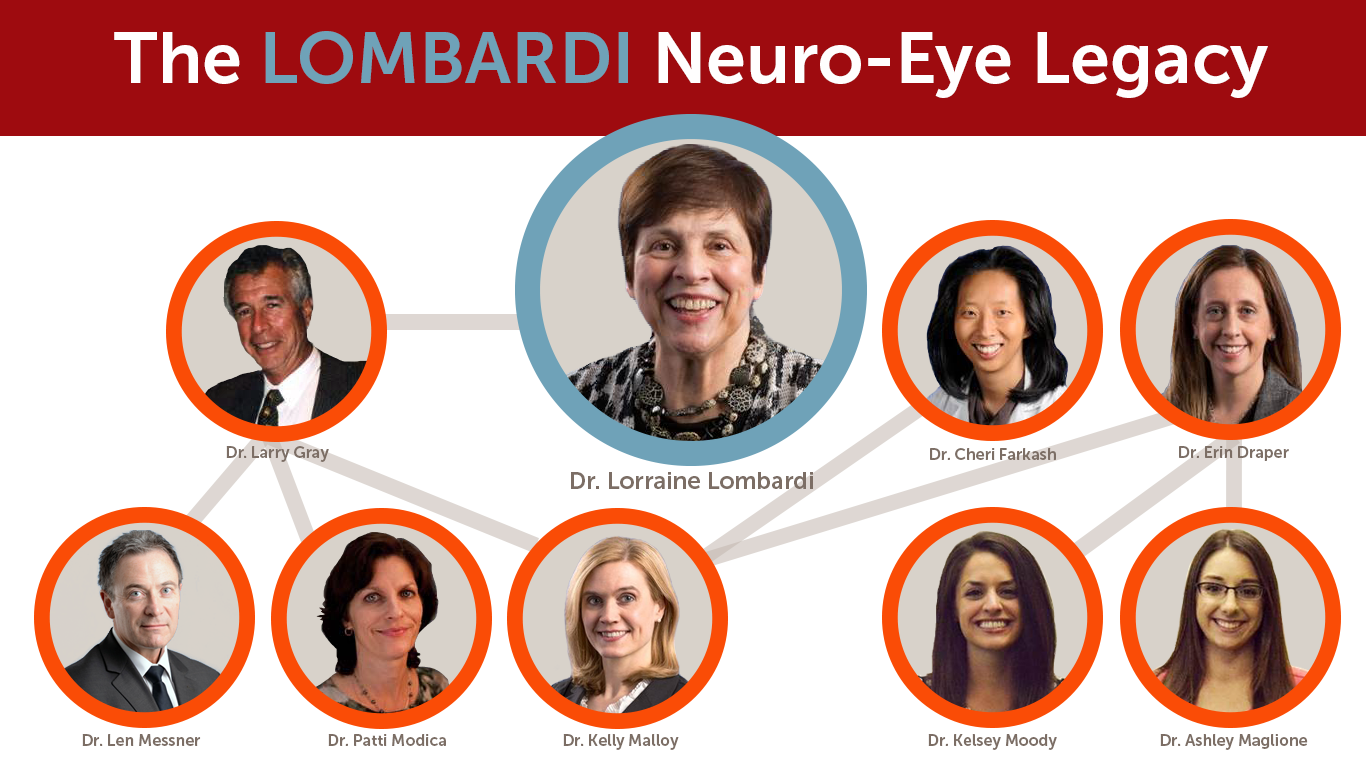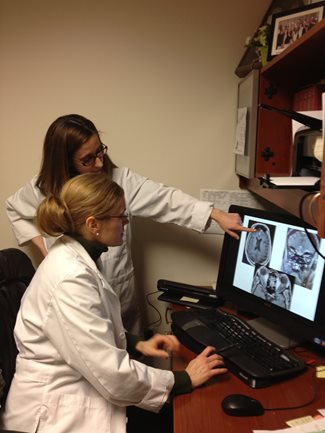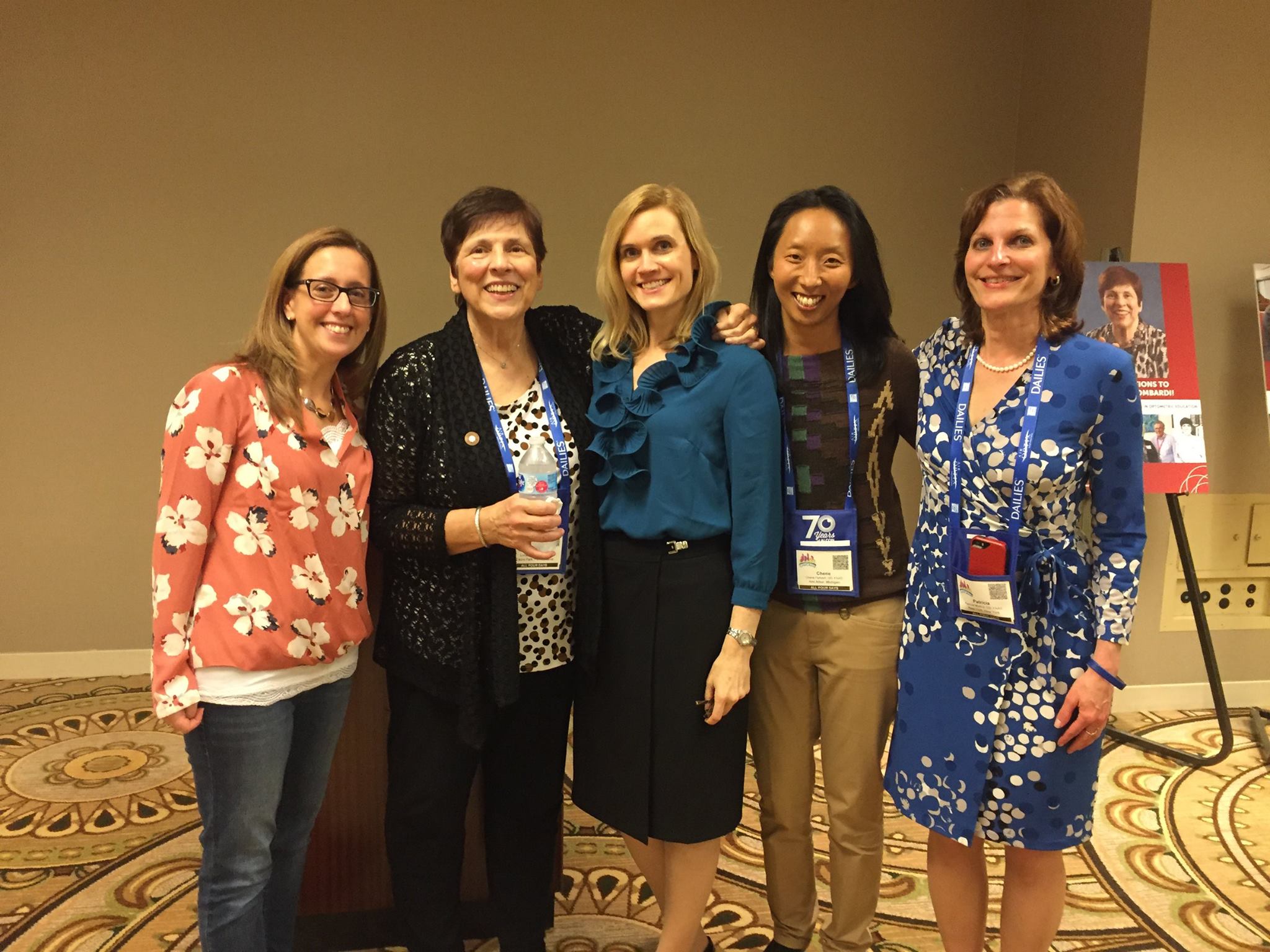Neuro-Ophthalmic Disease is a specialty discipline that studies vision related problems and issues associated with the brain, nerves, and muscles. The study of neuro-anatomy at Salus University, the Pennsylvania College of Optometry (PCO) and the corresponding Neuro-Ophthalmic Disease Service at The Eye Institute (TEI) has grown over the years, creating quite an extensive legacy in the profession.
The legacy originally initiated with Drs. Gilda Crozier, ’43, Onofrey (“Rybie”) Rybochok and Harold Simmerman, ‘30 but continued thanks in part to the work of Lorraine Lombardi, PhD, Salus professor emerita. A recognizable name and face in the Salus community, Dr. Lombardi understood that neuro-anatomy was an important part of optometry.

“I worked hard to be the best neuro-anatomist, and to make sure clinical neuro was explained by the science,” said Dr. Lombardi.
Dr. Lombardi developed courses such as head and neck gross anatomy and neuro-anatomy that were stimulating and exceptionally challenging. She strongly believed that learning neuro-anatomy and putting it into practice would help PCO’s graduates further distinguish themselves among other optometrists in the diagnosis of neuro-based diseases.
“Neuro doesn’t change, so I taught optometry students about neuro, and added eyes and vision,” she said.
 Later, Larry Gray, OD ’72 (a student in her first and second years of teaching) was working hard to study neuro diseases, and in the late ‘80s and early ‘90s they planned lectures and presented together.
Later, Larry Gray, OD ’72 (a student in her first and second years of teaching) was working hard to study neuro diseases, and in the late ‘80s and early ‘90s they planned lectures and presented together.
Dr. Gray trained Len Messner, OD ’84, currently the vice president of Patient Care Services at the Illinois Eye Institute and Patti Modica, OD ’88, who is an assistant clinical professor at SUNY’s Eye Center. Kelly Malloy, OD ‘96, began her neuro-ophthalmic disease studies under Dr. Gray at The Eye Institute (TEI), and is now its chief of Neuro-Ophthalmic disease. In turn, Dr. Malloy taught neuro-ophthalmic disease to Cheri Farkash, OD ’03, now a University of Michigan clinical instructor in Ophthalmology and Visual Science, and Erin Draper, OD ’09, PCO assistant professor who works alongside Dr. Malloy in the Neuro-Ophthalmic disease service.
In 2017, Drs. Malloy and Draper taught a two-year neuro-ophthalmic residency at TEI to Ashley Maglione, OD ’15 and Kelsey Moody, OD ’15. Dr. Maglione is now an instructor at PCO, while Dr. Moody is an assistant professor of ophthalmology at Emory Eye Center. Lombardi students all.
The fruits of her exemplary teaching are evident in the post graduate careers and successes of her former students including Dr. Malloy.
 “I was captivated by Gross Anatomy and Neuroanatomy and by the brilliant professor who made it so interesting and showed how this was directly applicable to patient care,” said Dr. Malloy. “On a daily basis, I am using what Dr. Lombardi initially taught me years ago.”
“I was captivated by Gross Anatomy and Neuroanatomy and by the brilliant professor who made it so interesting and showed how this was directly applicable to patient care,” said Dr. Malloy. “On a daily basis, I am using what Dr. Lombardi initially taught me years ago.”
In a passing of the baton of sorts, Dr. Malloy now teaches those very same courses developed by Dr. Lombardi to first year students. And the Neuro-Ophthalmic Disease residents have received not only hands-on training and experience but first-class mentorship from both mentors.
“Drs. Erin Draper and Kelly Malloy are the definition of wonderful mentors. Their detailed and thorough approaches to an examination is what attracted me to the service as a student,” said Dr. Maglione.
Mentorship is key – especially in a specialty area that also requires both interdisciplinary team work and detective work. Patients of the Neuro-Ophthalmic Disease service often experience symptoms of sudden or temporary vision loss, visual disturbances, visual field loss, double vision, drooping eyelids, or other changes in the appearance of their eyes. The goal of neuro-ophthalmic disease optometrists is to put together the pieces of the puzzle.
“The Neuro-Ophthalmic Disease Service bridges the gap between primary eye care providers and neurologists,” said Dr. Malloy. “I was also drawn to the challenge and the ‘detective work’ of localizing the problem and uncovering the cause of the patient’s signs and symptoms.”
“Upon examining a patient with a neuro-ophthalmic condition, you can often take their symptoms and correlate it to your knowledge of human anatomy – more specifically neuro-anatomy,” said Dr. Maglione. “I enjoy piecing those puzzle pieces together in a way that allows me to provide the best care possible to my patients.”

To some, the problem solving nature of the profession can be viewed as a deterrent. However for many, it’s the captivating nature of the specialty that has kept the study and practice of Neuro-Ophthalmic Disease thriving both at Salus PCO and around the world.
“As more optometrists are thoroughly trained, I suspect the field of neuro-ophthalmic disease will continue to grow in our communities,” said Dr. Maglione. “I am honored and excited not only to continue the legacy but also hope to inspire ‘neuro-excellence’ in the way that it was inspired for me.”